Landscapes Design Guide Series
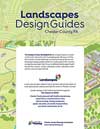 The design of new development has a huge impact on local community character and municipal goals. Because of this, the Chester County Planning Commission has produced six landscape design guides based on Landscapes3, the county's comprehensive plan, that focus on different landscapes found around the county — urban, suburban center, suburban, rural center, rural, and agricultural.
The design of new development has a huge impact on local community character and municipal goals. Because of this, the Chester County Planning Commission has produced six landscape design guides based on Landscapes3, the county's comprehensive plan, that focus on different landscapes found around the county — urban, suburban center, suburban, rural center, rural, and agricultural.
View the Landscapes Design Guides brochure to learn more about each guide, or view the individual guides below.
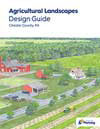 Agricultural Landscapes Design Guide (2024)
Agricultural Landscapes Design Guide (2024)
The planning principles and design elements for Agricultural Landscapes are focused on the maintenance of a low density development pattern and conservation of agricultural lands and sensitive environmental resources. View Document
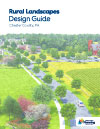 Rural Landscapes Design Guide (2023)
Rural Landscapes Design Guide (2023)
The planning principles and design elements for Rural Landscapes maintain a low density development pattern and conserve agricultural lands and sensitive environmental resources. View Document
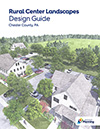 Rural Center Landscapes Design Guide (2022)
Rural Center Landscapes Design Guide (2022)
The planning principles and design elements for Rural Center Landscapes guide new development in underutilized developed land, villages with expansion or rehabilitation potential, infill sites that interconnect business areas, and areas close to public utilities. View Document
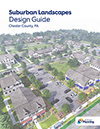 Suburban Landscapes Design Guide (2021)
Suburban Landscapes Design Guide (2021)
The planning principles and design elements for Suburban Landscapes guide new development in neighborhood centers, sites with lot consolidation opportunities, greenfields with sensitive infill potential, and areas close to public utilities and transportation. View Document
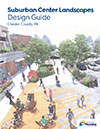 Suburban Center Landscapes Design Guide (2021)
Suburban Center Landscapes Design Guide (2021)
The planning principles and design elements for Suburban Center Landscapes guide new development in corridors, underutilized shopping centers, older office and business parks, and infill locations. View Document
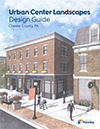 Urban Center Landscapes Design Guide (2020)
Urban Center Landscapes Design Guide (2020)
The planning principles and design elements for Urban Center Landscapes guide new development in downtown areas, underutilized non-residential properties, older industrial properties, and parking lots. View Document

